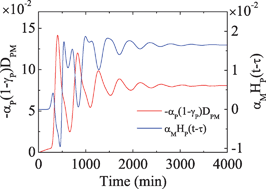Delay Hill dynamics in regulatory biological systems
Abstract
We explore one of the best-studied

* Corresponding authors
a College of Nuclear Science and Technology, Beijing Normal University, Beijing 100875, PR China
b Beijing Radiation Center, Beijing 100875, PR China
c
Center of Theoretical Physics, National Laboratory of Heavy Ion Accelerator of Lanzhou, Lanzhou 730000, PR China
E-mail:
yansw@bnu.edu.cn
We explore one of the best-studied

 Please wait while we load your content...
Something went wrong. Try again?
Please wait while we load your content...
Something went wrong. Try again?
B. Liu, S. Yan and Q. Wang, Mol. BioSyst., 2011, 7, 457 DOI: 10.1039/C0MB00133C
To request permission to reproduce material from this article, please go to the Copyright Clearance Center request page.
If you are an author contributing to an RSC publication, you do not need to request permission provided correct acknowledgement is given.
If you are the author of this article, you do not need to request permission to reproduce figures and diagrams provided correct acknowledgement is given. If you want to reproduce the whole article in a third-party publication (excluding your thesis/dissertation for which permission is not required) please go to the Copyright Clearance Center request page.
Read more about how to correctly acknowledge RSC content.
 Fetching data from CrossRef.
Fetching data from CrossRef.
This may take some time to load.
Loading related content
